Haixu Case Study #7 - Ecosystem
 Anand (RC)
Anand (RC)Table of contents
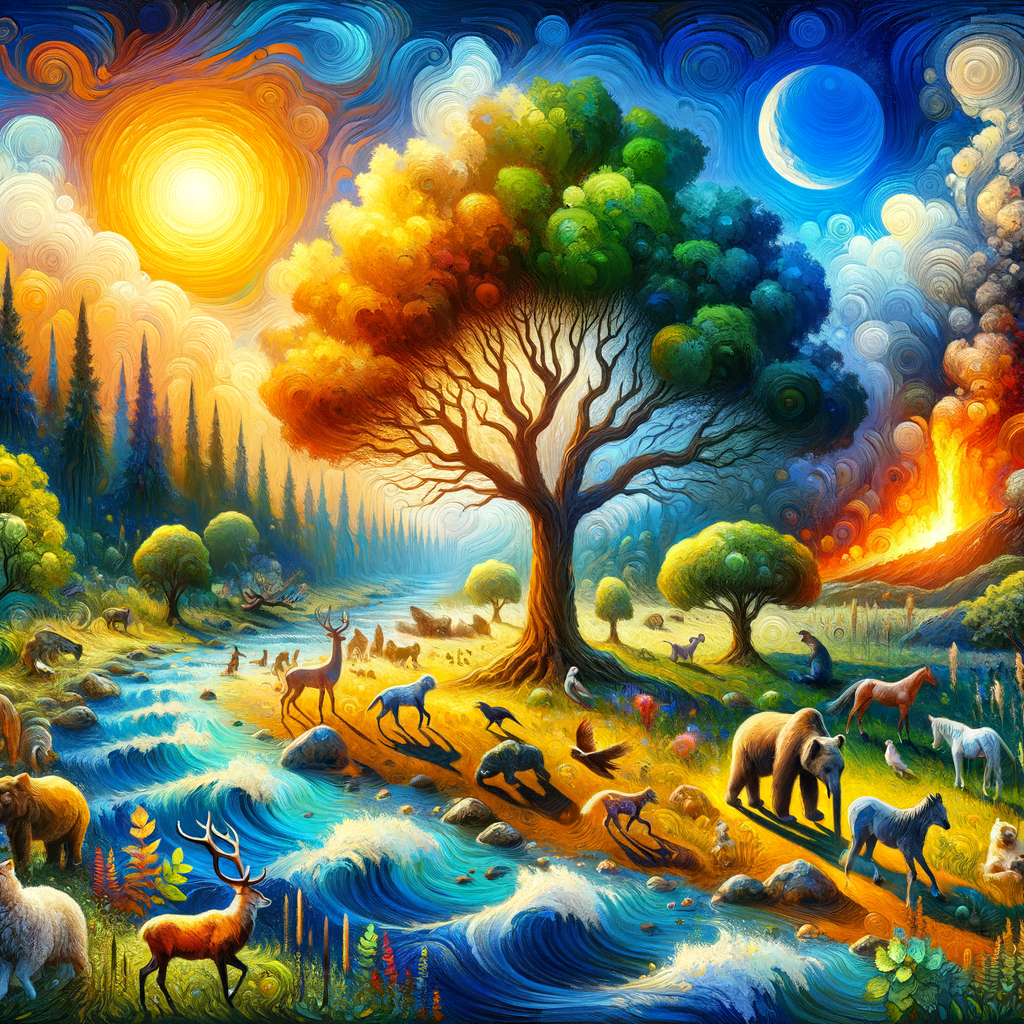
This deep dive case study explores the haixu visual guides on Ecosystems, one of the most fundamental concepts in ecology and environmental science. We'll be examining two versions of the guide: v1 and v2. You can find these guides here.
For broader context on what haixu is, how it works, and what to expect, please refer to the first visual guide case study on Bioluminescence.
Overview
Let's start by looking at the covers and tables of contents for both versions:
Cover of Ecosystem visual guide v1
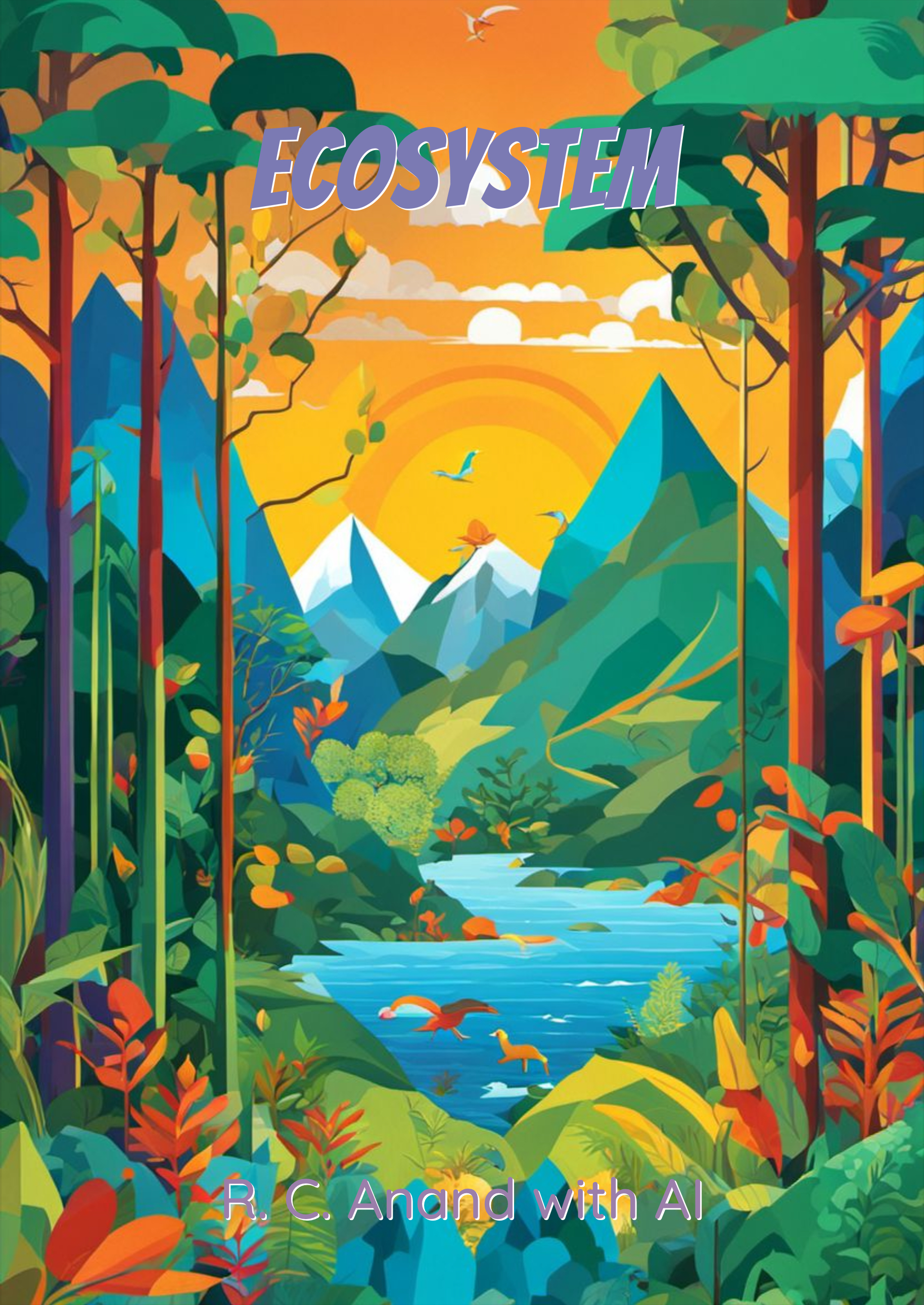
Table of contents for Ecosystem visual guide v1
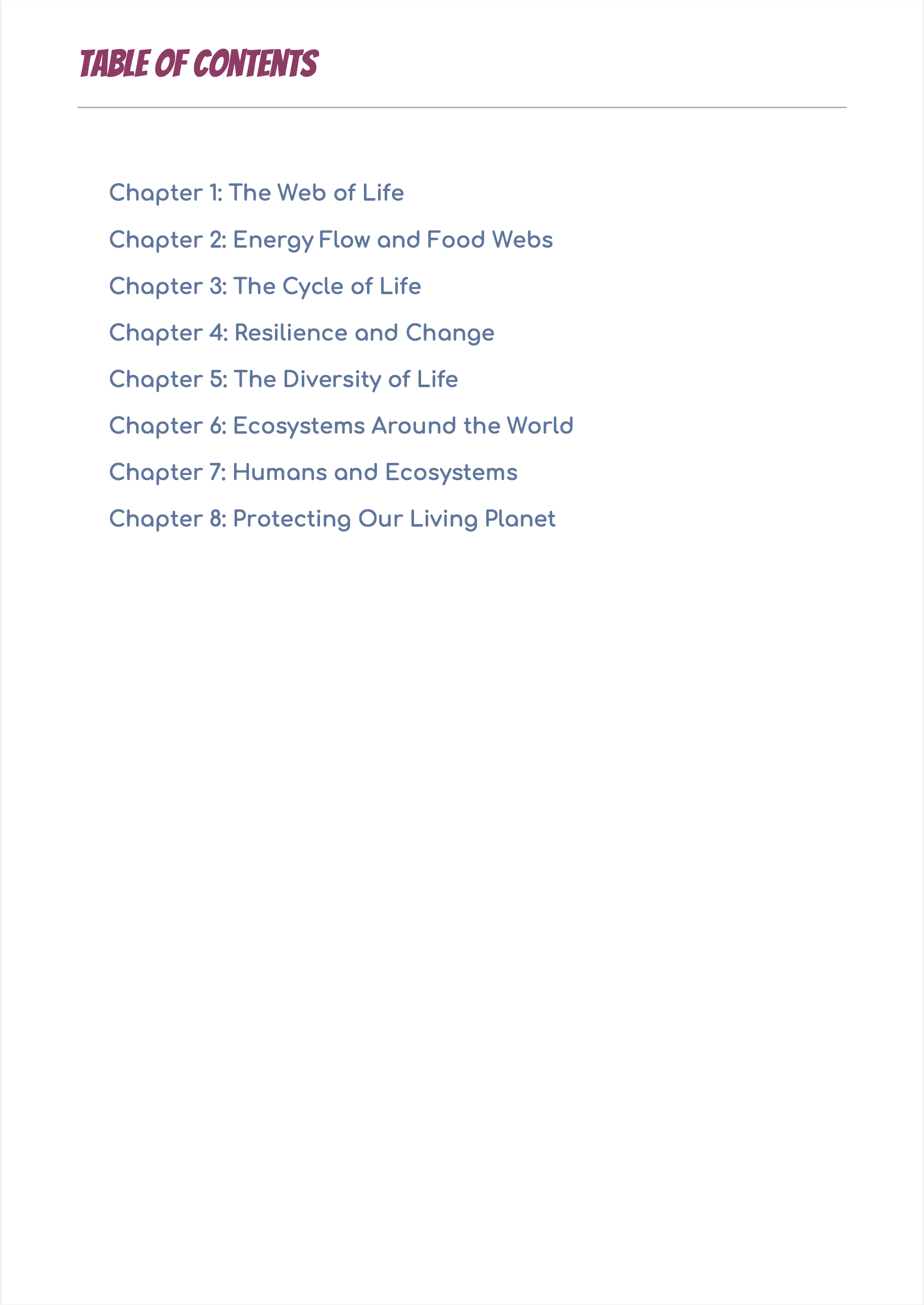
Cover of Ecosystem visual guide v2
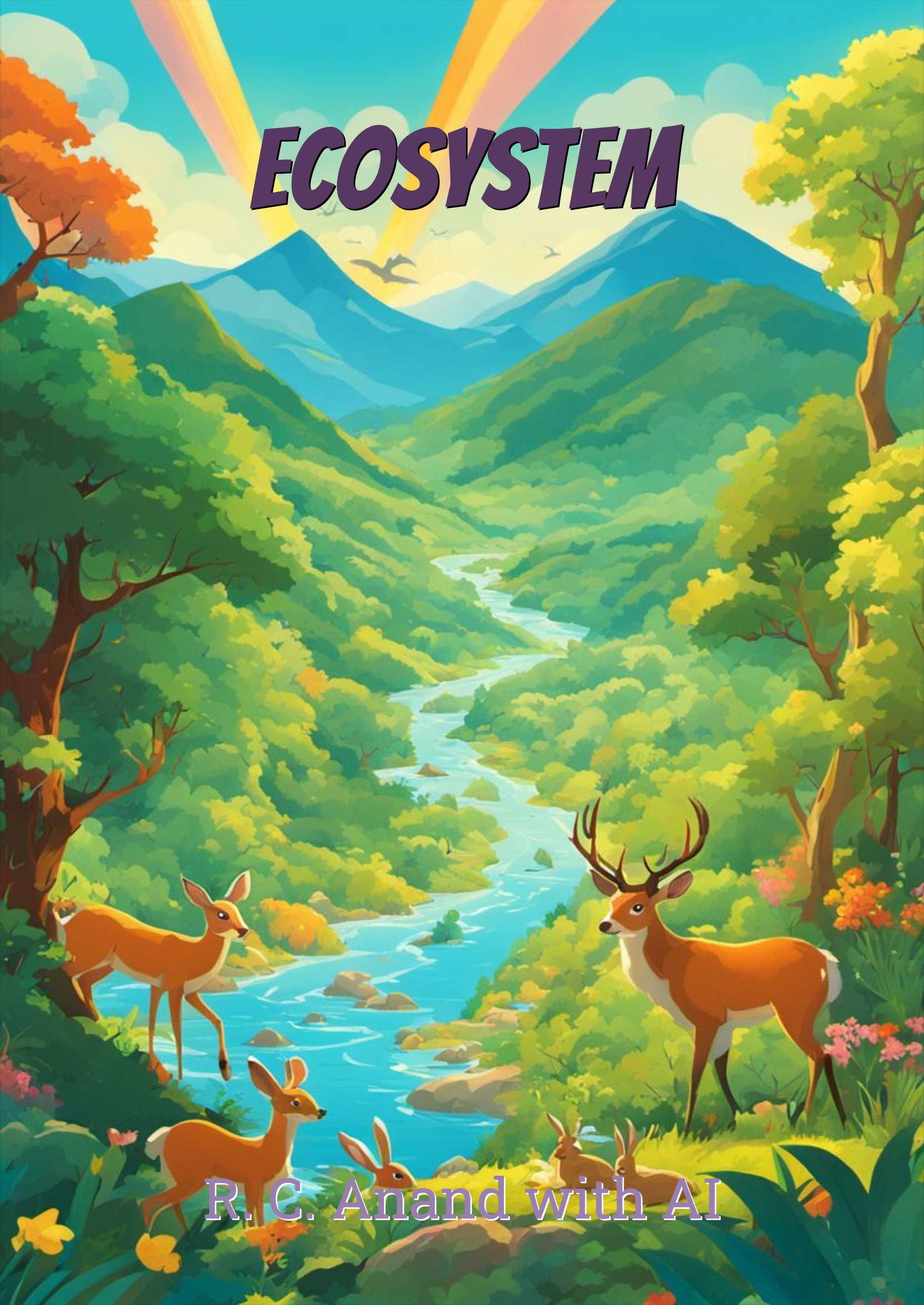
Table of contents for Ecosystem visual guide v2
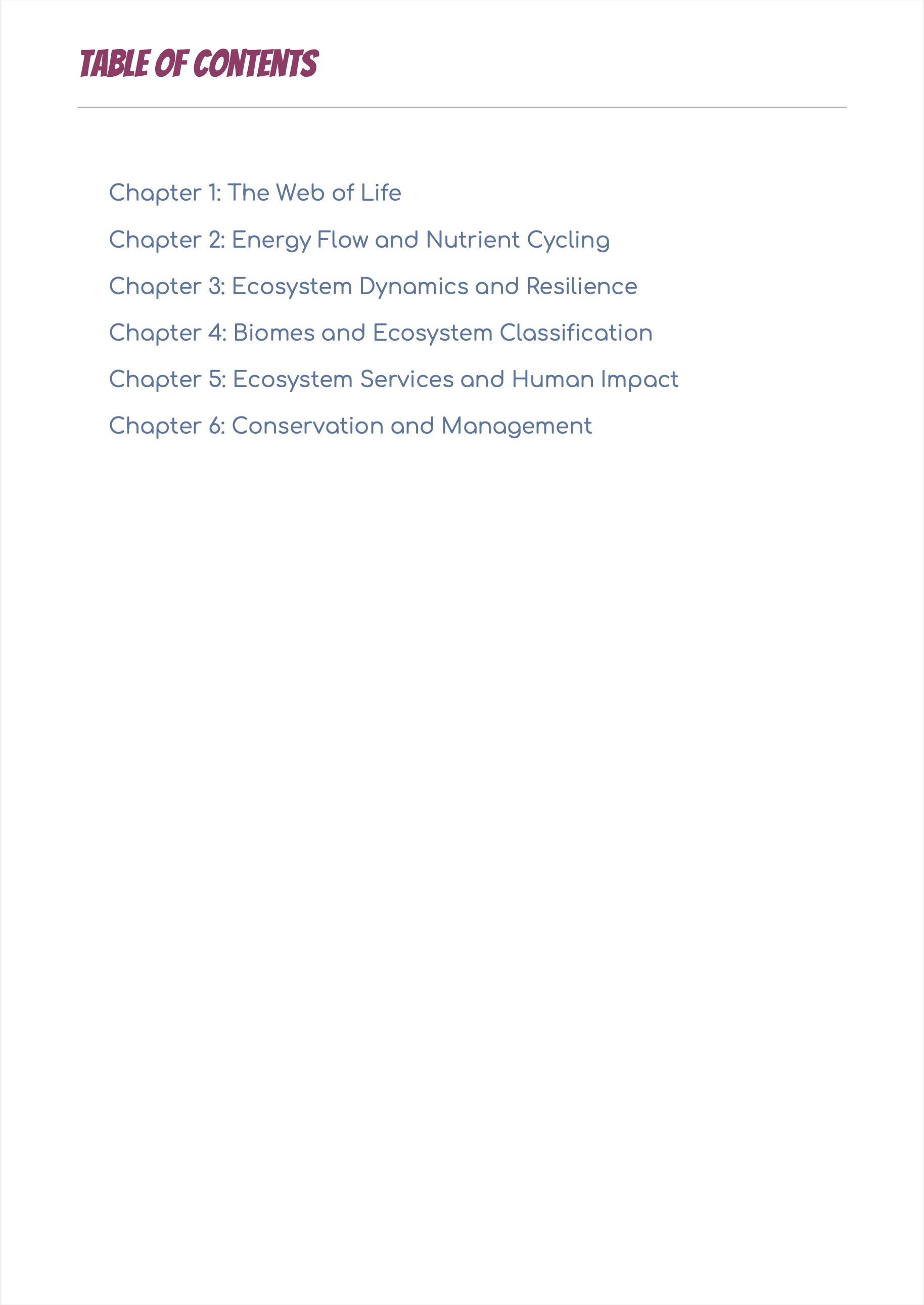
Topic Suitability and Handling
Ecosystems are an excellent topic for an AI-generated visual guide:
Complex interactions: Ecosystems involve intricate relationships between living organisms and their environment, which benefit from visual explanations.
Multi-scale perspective: The guide can visualize ecosystem components from microscopic organisms to large-scale biomes.
Global relevance: Ecosystems are crucial for understanding environmental issues, making the topic widely applicable.
Interdisciplinary nature: Ecosystems touch on biology, chemistry, physics, and environmental science, allowing for diverse content.
Content Analysis
1. The Web of Life
Overview of ecosystem components (v2, pages 2-3)
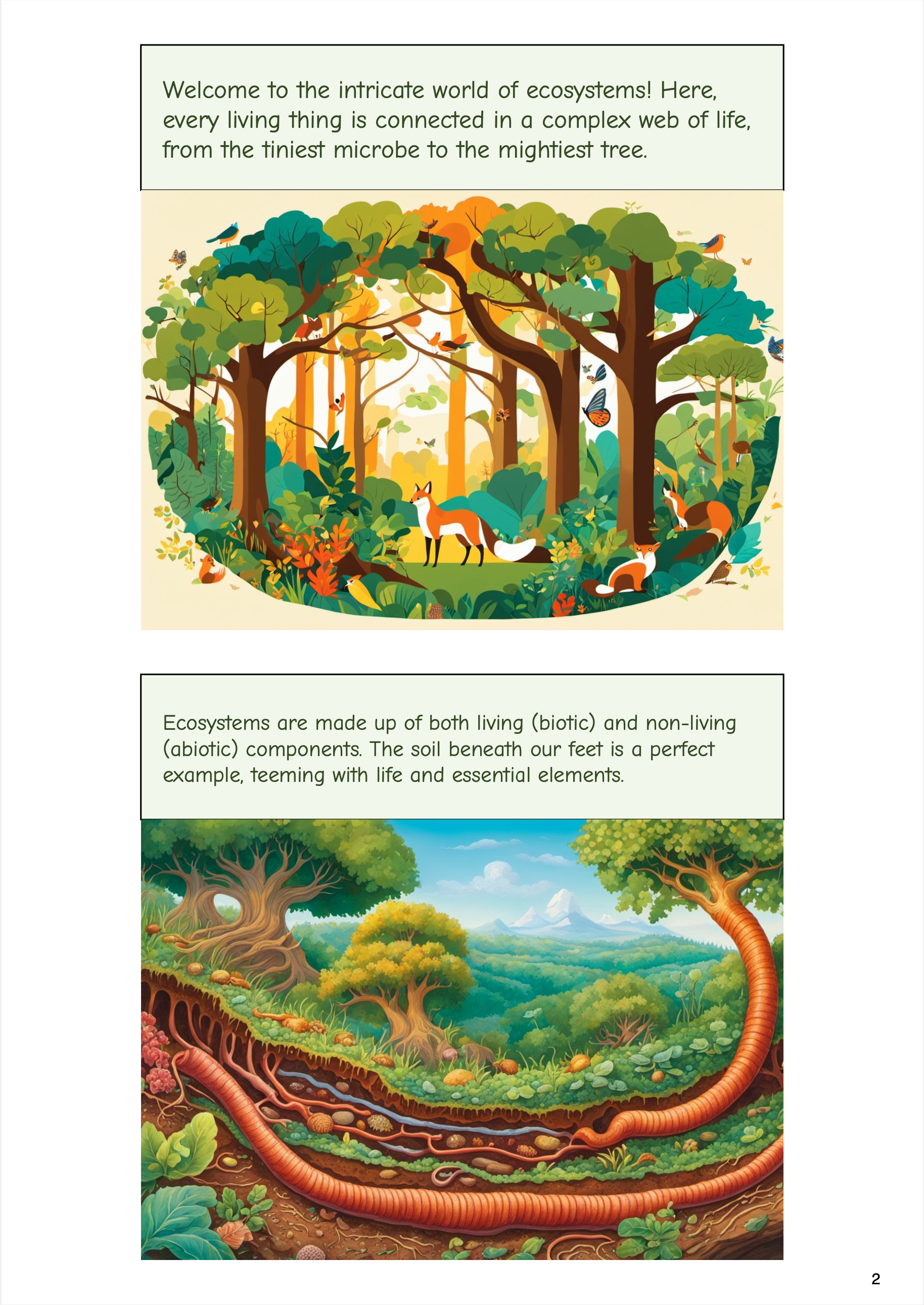
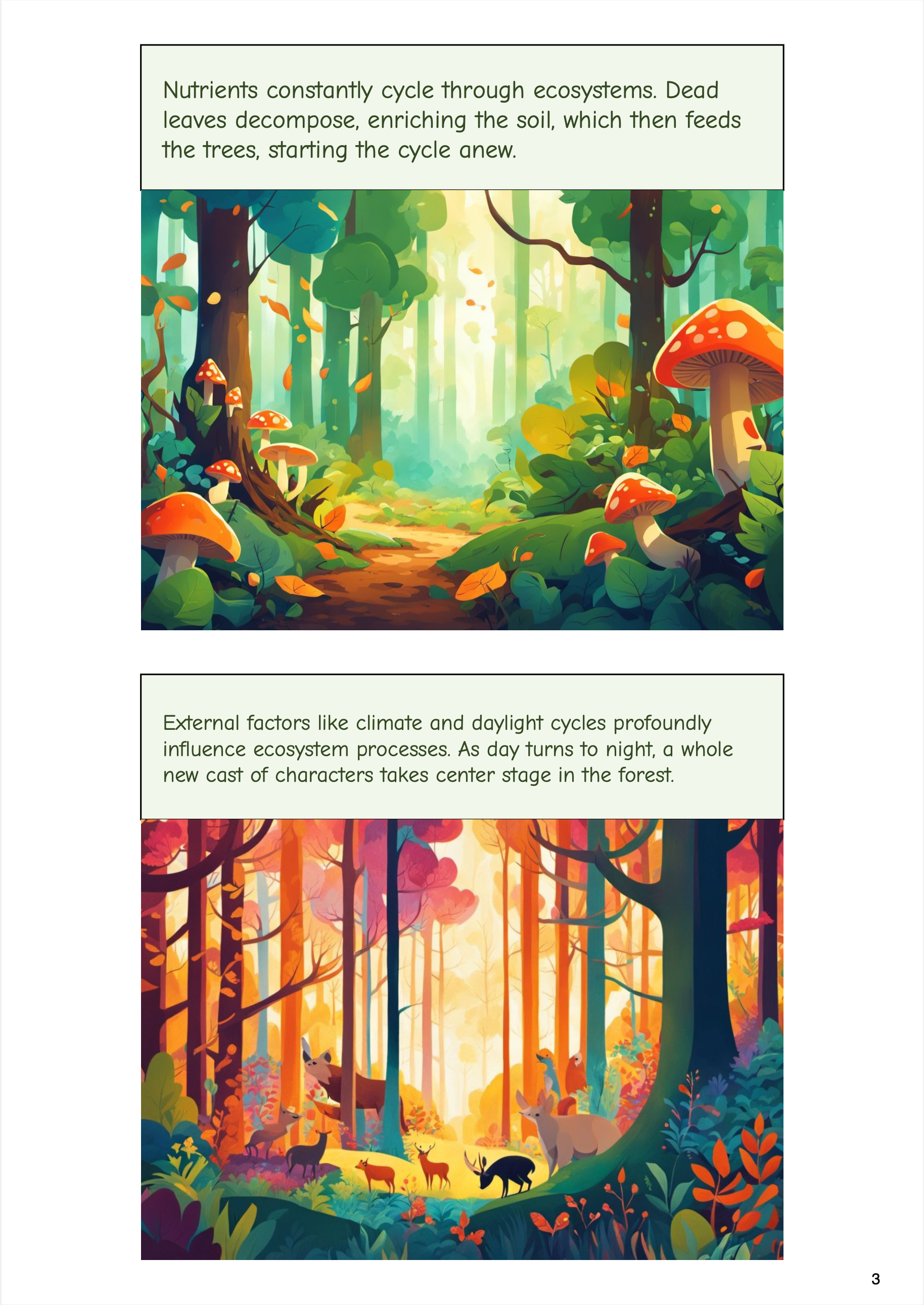
Both versions begin with an introduction to the concept of ecosystems, explaining the interconnectedness of living and non-living components.
Positive Aspect: The guides provide accessible explanations of complex ecological concepts, making them understandable for a general audience.
Who Benefits:
High school and undergraduate students studying ecology and environmental science
Lifelong learners interested in understanding natural systems
Educators looking for visual aids to explain ecosystem concepts
2. Energy Flow and Nutrient Cycling
Energy flow and food webs (v1, pages 6-7)
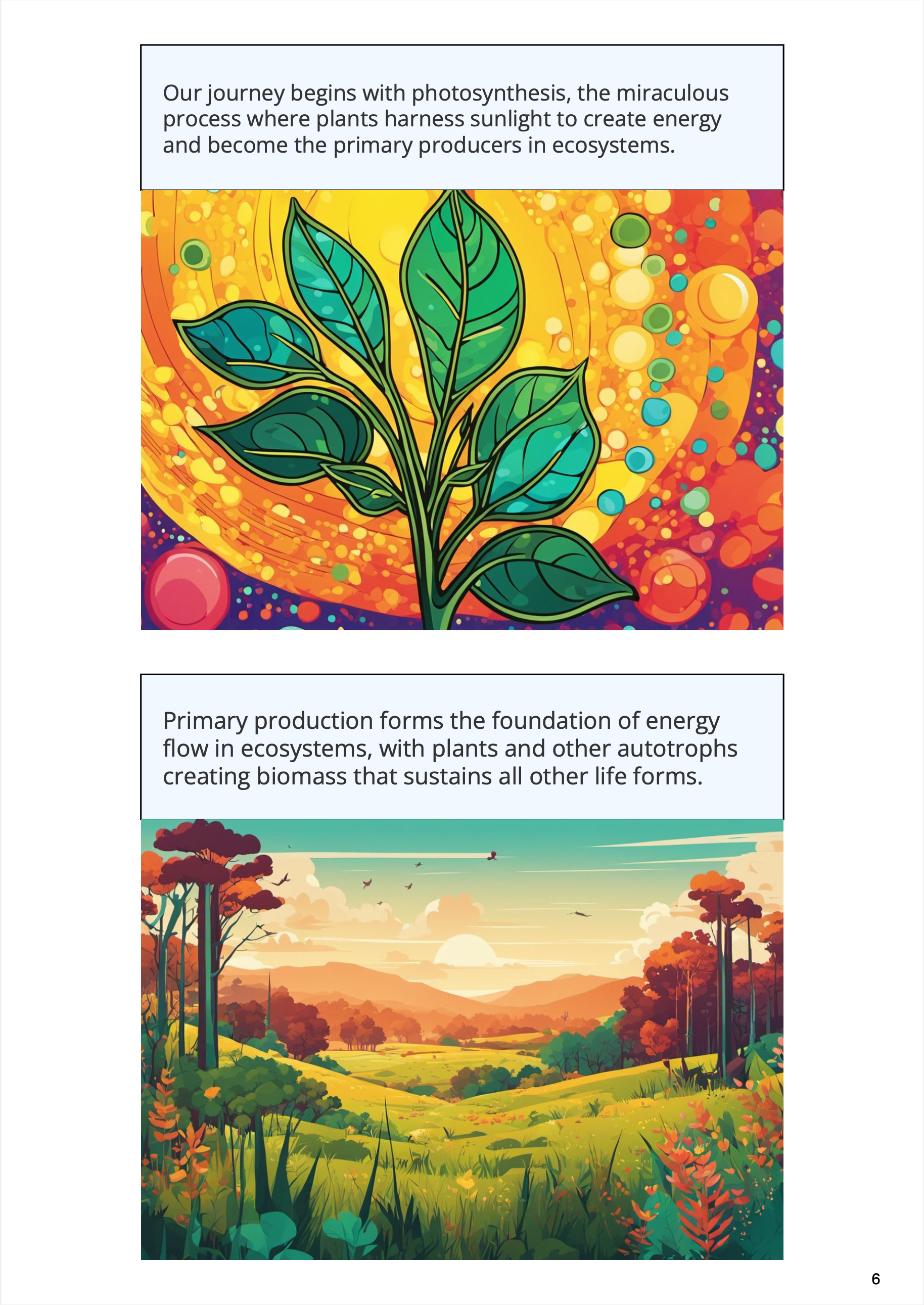
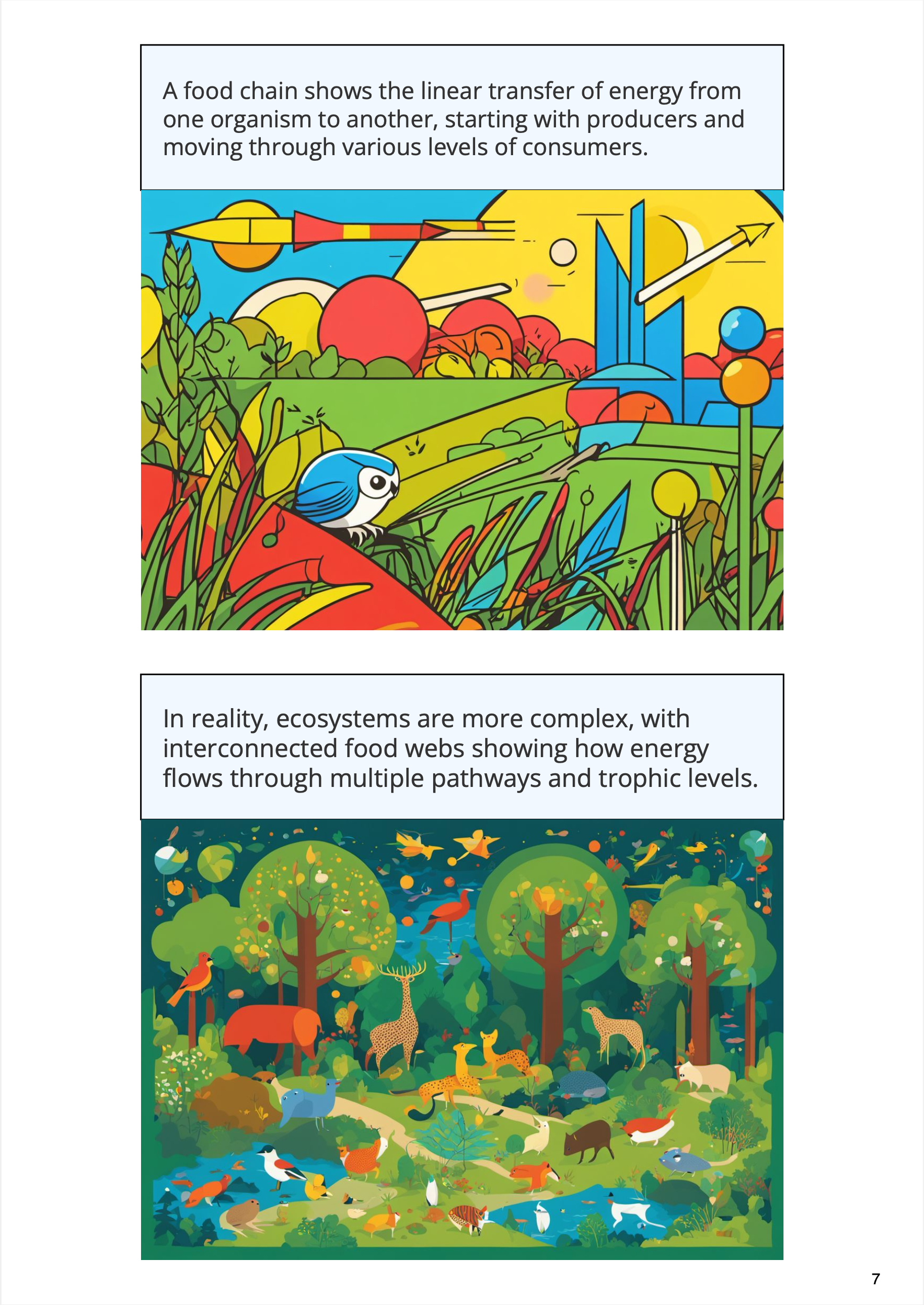
The guides excel at depicting the flow of energy and nutrients through ecosystems, from producers to consumers and decomposers.
Interesting Nuance: The AI-generated images provide unique visualizations of abstract concepts like energy flow and nutrient cycling, offering fresh perspectives on familiar ecological processes.
Who Benefits:
Biology and environmental science students at all levels
Researchers needing creative visualizations for presentations or publications
Science communicators looking for engaging ways to explain ecological concepts
3. Ecosystem Dynamics and Resilience
Ecosystem resilience and succession (v2, pages 10-11)
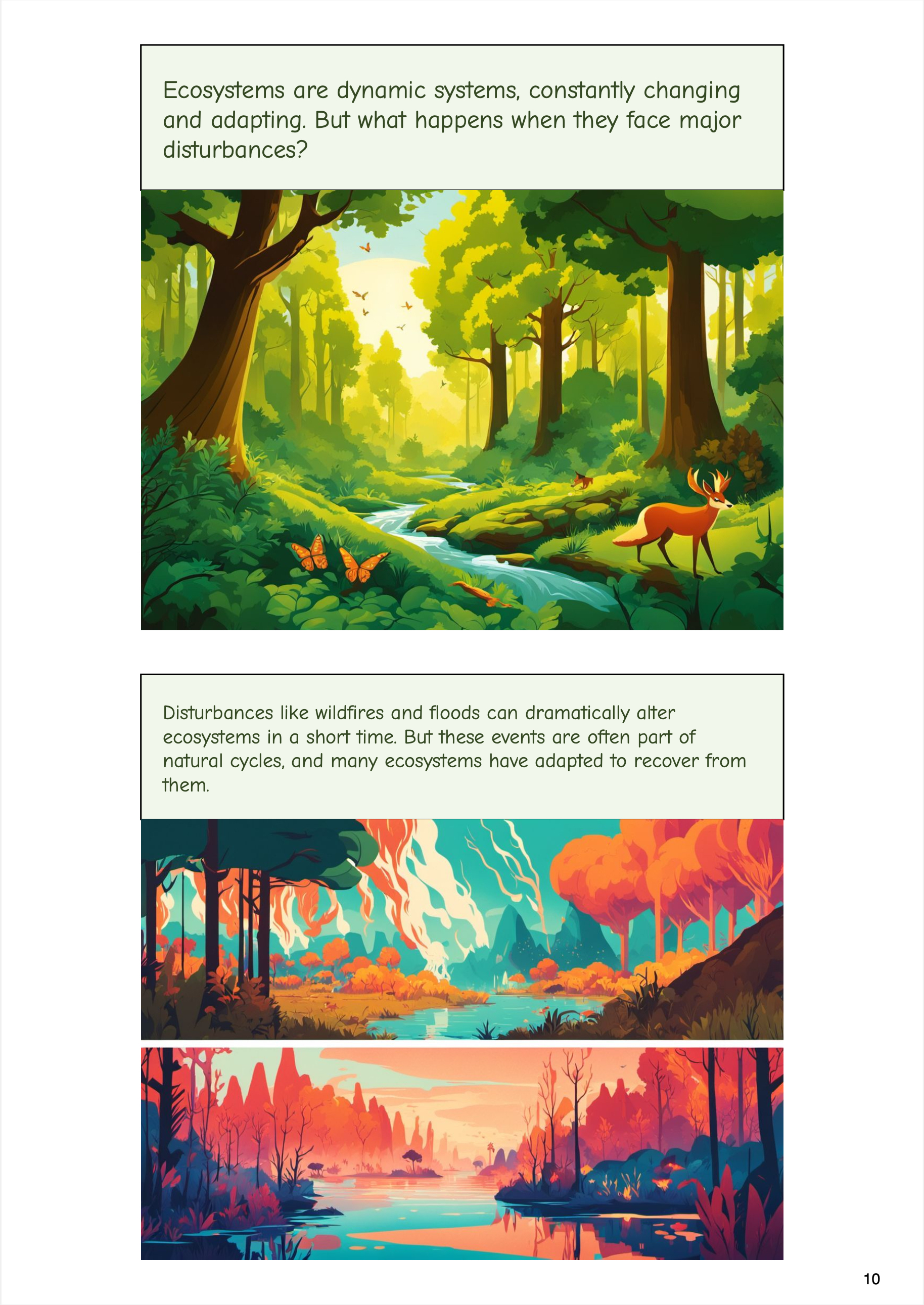
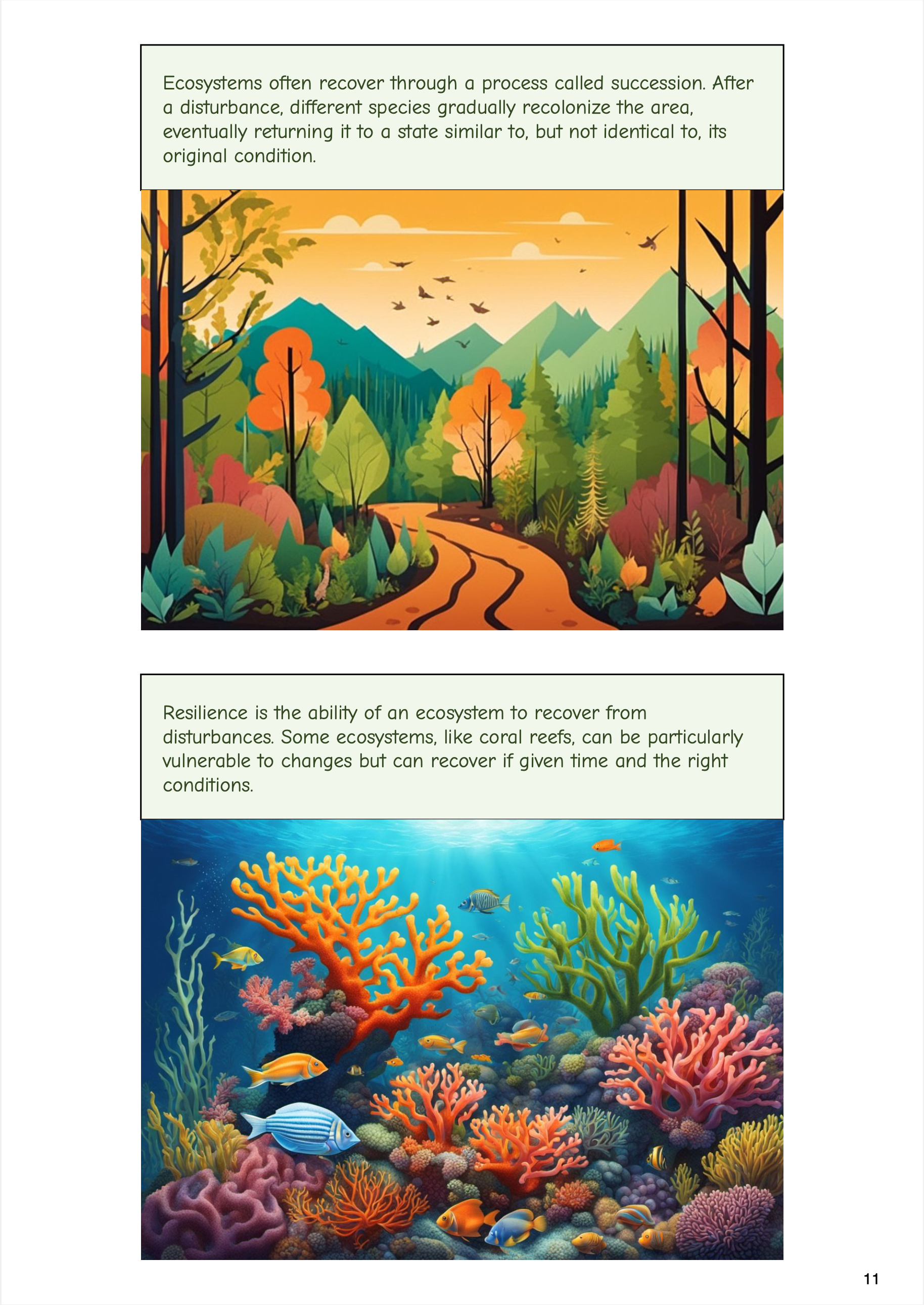
Both guides offer detailed explanations of how ecosystems respond to disturbances and recover through processes like ecological succession.
Positive Aspect: Complex ecological processes are broken down into understandable steps, with clear visual representations of ecosystem changes over time.
Who Benefits:
Advanced high school and university students studying ecology or environmental science
Educators teaching about ecosystem dynamics and resilience
Conservationists and environmental managers needing to understand ecosystem recovery processes
4. Biomes and Ecosystem Classification
Different types of biomes (v2, pages 14-15)
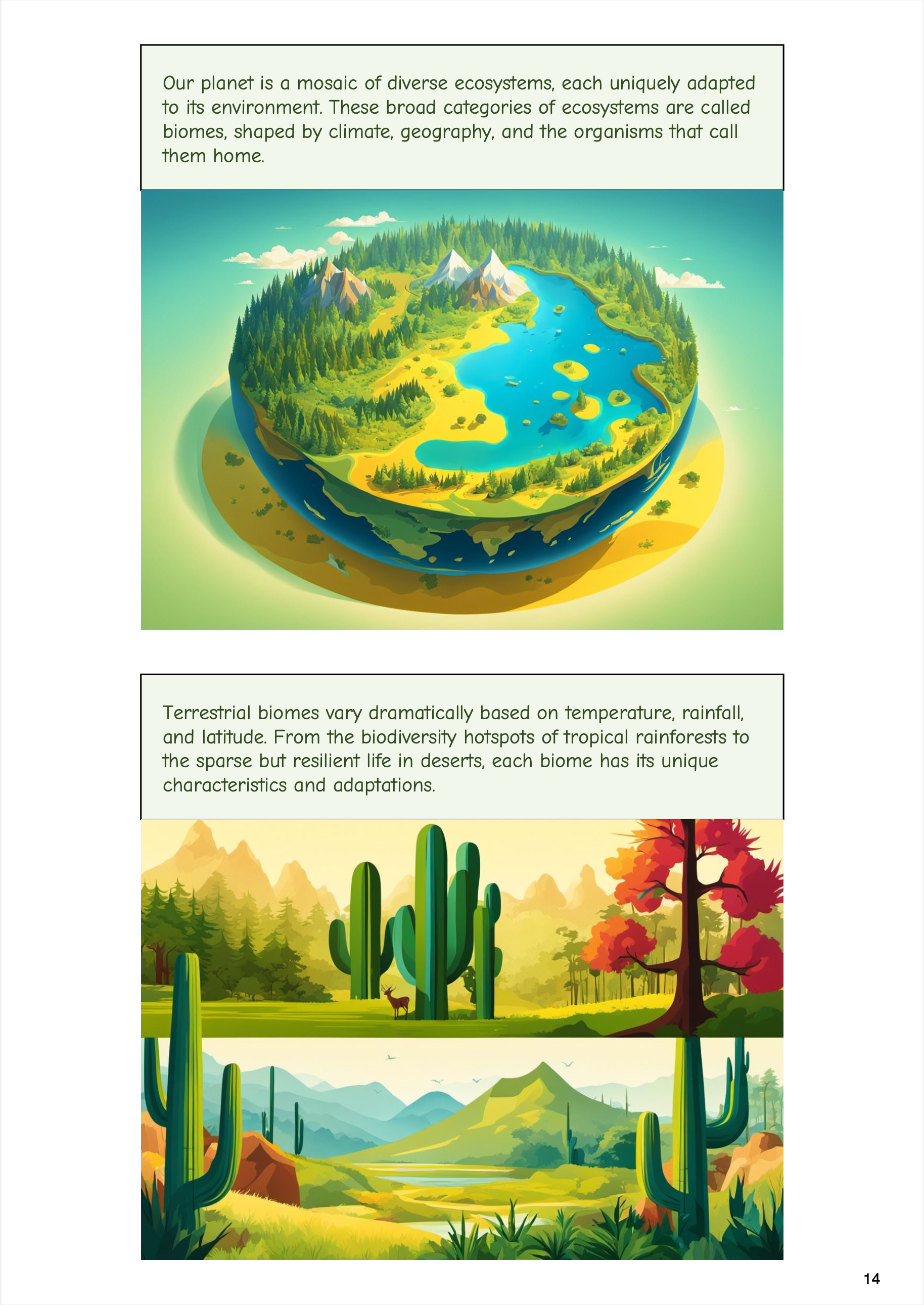
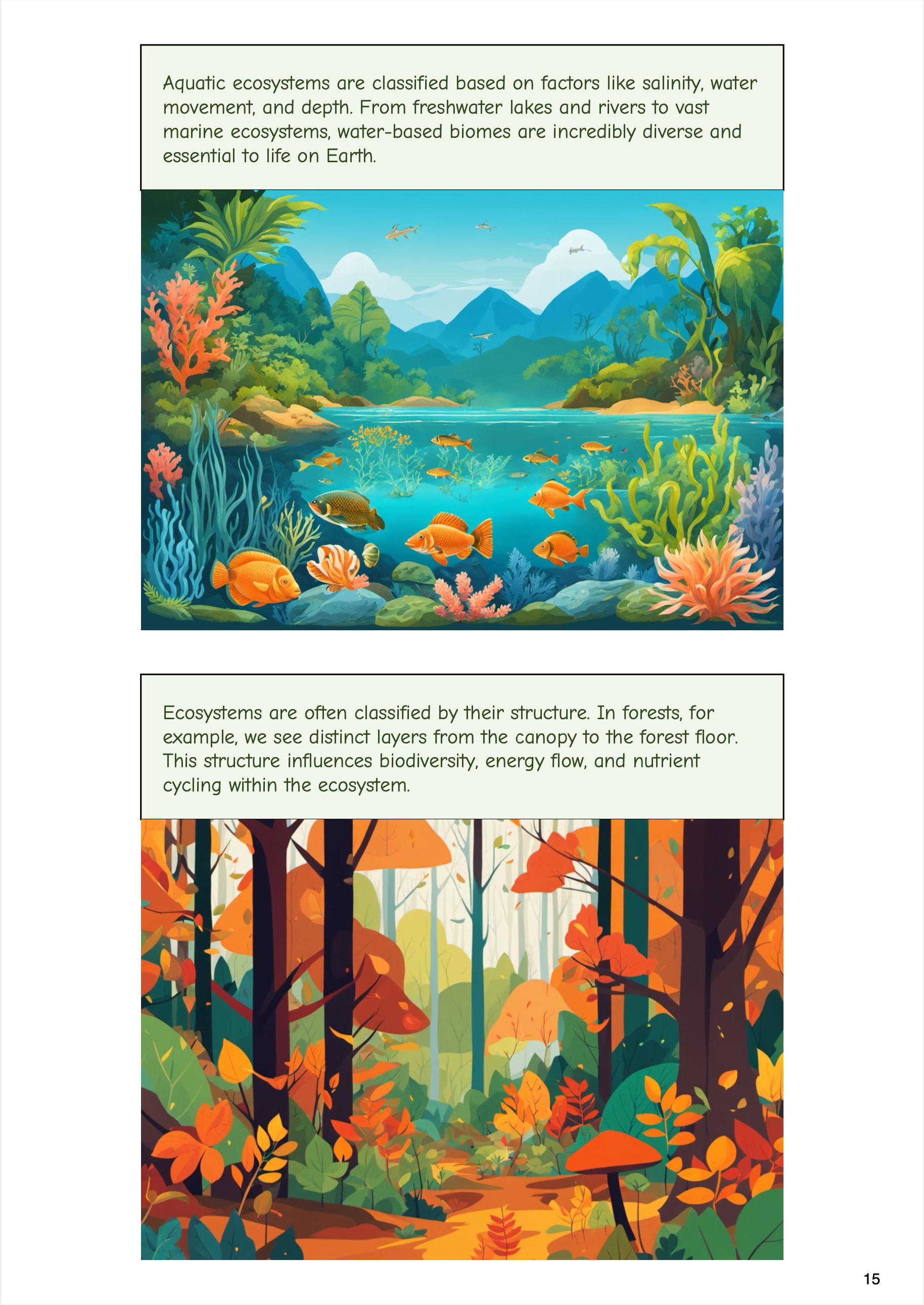
The guides explore the diversity of ecosystems around the world, from terrestrial to aquatic biomes.
Interesting Challenge: The AI manages to create compelling visualizations of diverse ecosystems, showcasing the unique characteristics of different biomes.
Who Benefits:
Geography and earth science students
Ecologists and biogeographers
Nature enthusiasts and travelers interested in understanding different ecosystems
5. Ecosystem Services and Human Impact
Ecosystem services and human activities (v2, pages 18-19)
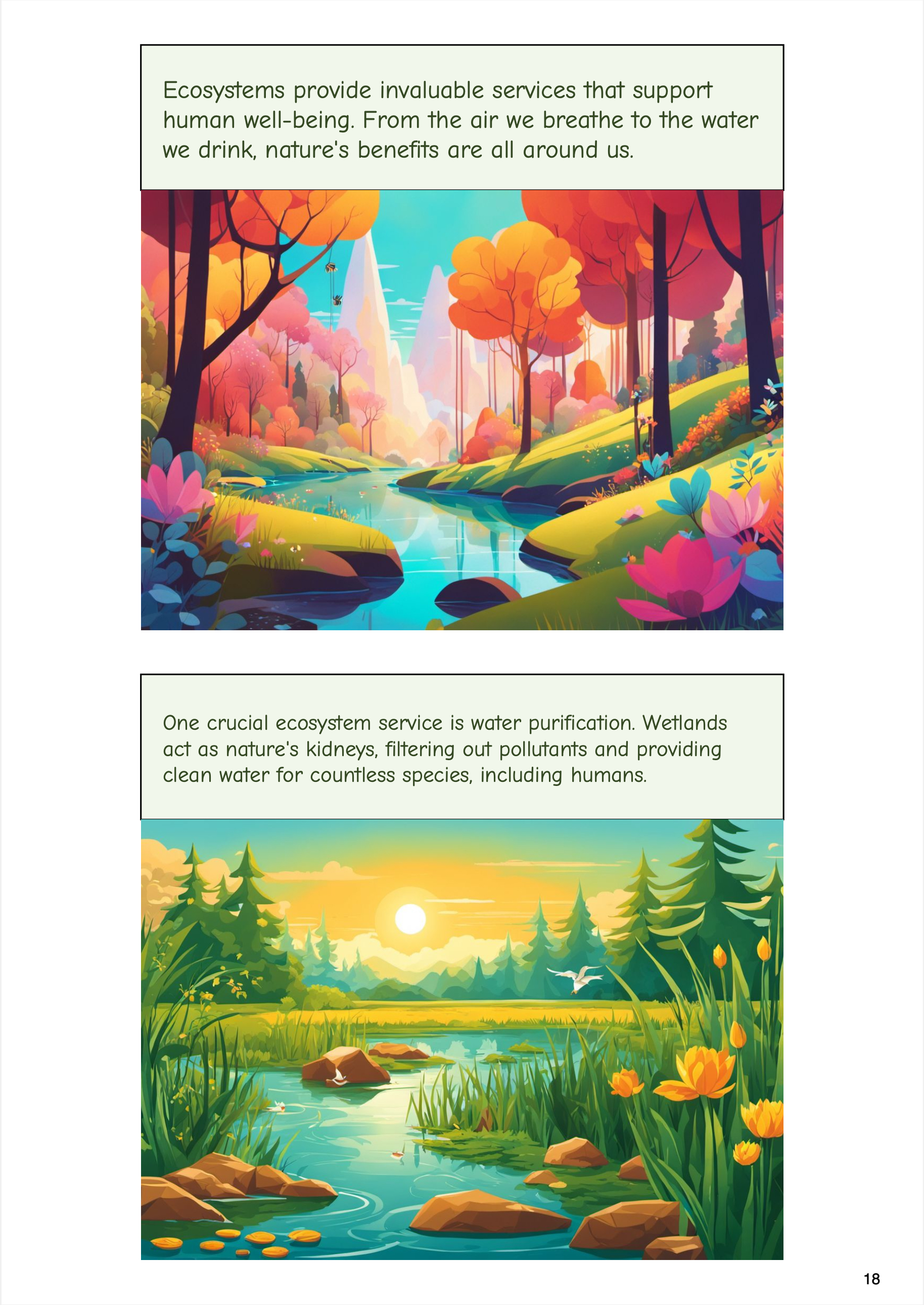
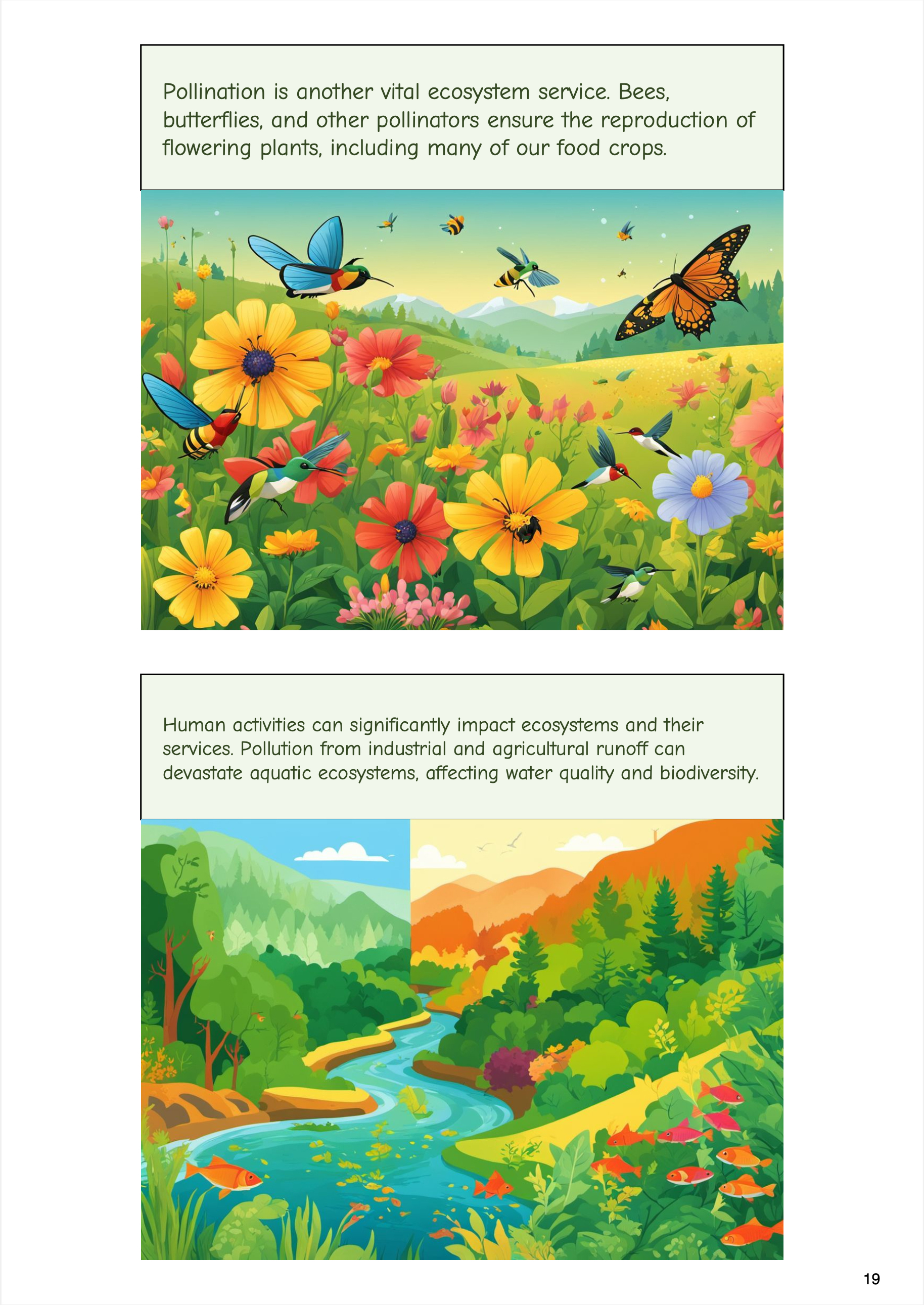
Both versions touch on the crucial services ecosystems provide and the impacts of human activities on natural systems.
Positive Aspect: The guides connect fundamental ecological concepts to real-world issues, showcasing the relevance of ecosystem science to human well-being and environmental challenges.
Who Benefits:
Environmental policy students and professionals
Sustainable development practitioners
General public interested in environmental issues and conservation
Educational Value and Accuracy
Comprehensive Coverage: Both guides offer a thorough exploration of ecosystems, from basic principles to advanced concepts and real-world applications.
Visual Learning: The AI-generated images provide unique and engaging visualizations of complex ecological processes, enhancing understanding through visual learning.
Interdisciplinary Connections: The guides effectively link ecosystem science to broader topics in biology, chemistry, and even social sciences, providing a holistic view of the subject.
Accuracy: While the general principles and processes are accurately represented, users should always cross-reference with peer-reviewed sources for the most up-to-date scientific information, especially regarding specific ecosystem data or climate change impacts.
Who Can Benefit from These Visual Guides
The Ecosystem visual guides can be valuable resources for a wide range of individuals:
Students: From high school biology students to graduate-level ecology researchers, these guides offer visualizations and explanations that can supplement traditional textbooks and lectures.
Educators: Teachers and professors can use these guides as visual aids in their lessons, providing engaging illustrations of complex ecological concepts.
Researchers: Scientists in fields related to ecology, environmental science, and conservation biology can find fresh perspectives and visual inspiration for their work and presentations.
Environmental Professionals: Those working in conservation, natural resource management, or environmental policy can use these guides to better understand and communicate about ecosystem processes.
Science Communicators: Journalists, writers, and documentary makers focusing on environmental topics can use these guides to better understand and explain ecosystem concepts to their audiences.
Policymakers: Those involved in environmental policy and sustainable development can gain a deeper understanding of ecosystem functions and services, informing better decision-making.
Artists and Illustrators: Those creating science-based art or illustrations can find unique visual interpretations of ecological concepts.
Lifelong Learners: Anyone with a curiosity about how natural systems work can benefit from these accessible yet comprehensive guides.
Conclusion
The Ecosystem visual guides demonstrate the power of AI-generated educational content to make complex ecological topics accessible and engaging. By combining clear explanations with unique visualizations, these guides offer valuable resources for a diverse audience, from students and educators to professionals and curious individuals.
While these guides should not replace traditional academic resources, they serve as excellent supplementary materials, offering fresh perspectives and visual aids that can enhance understanding of ecosystem science. As AI technology continues to evolve, we can expect even more sophisticated and tailored educational resources that cater to a wide range of learning styles and needs.
You can get these visual guides here.
About me
I am a software/AI/product engineer/scientist conducting cutting-edge research in modern generative AI. Please consider buying my AI-generated visual guides at the store to support my work. It will also help me immensely if you spread the word, comment, like, and share my posts about haixu. Thank you!
Subscribe to my newsletter
Read articles from Anand (RC) directly inside your inbox. Subscribe to the newsletter, and don't miss out.
Written by

Anand (RC)
Anand (RC)
I am currently working on generative AI, currently text+image experiences, educational AI generated visual guides in various mediums (comic, video, etc.). Before that, I was building llm apps with chat models, evaluating GPTs and Assistants API. Before that worked in conversational AI. Prior to that, have worked on many things product, software, AI, ML.